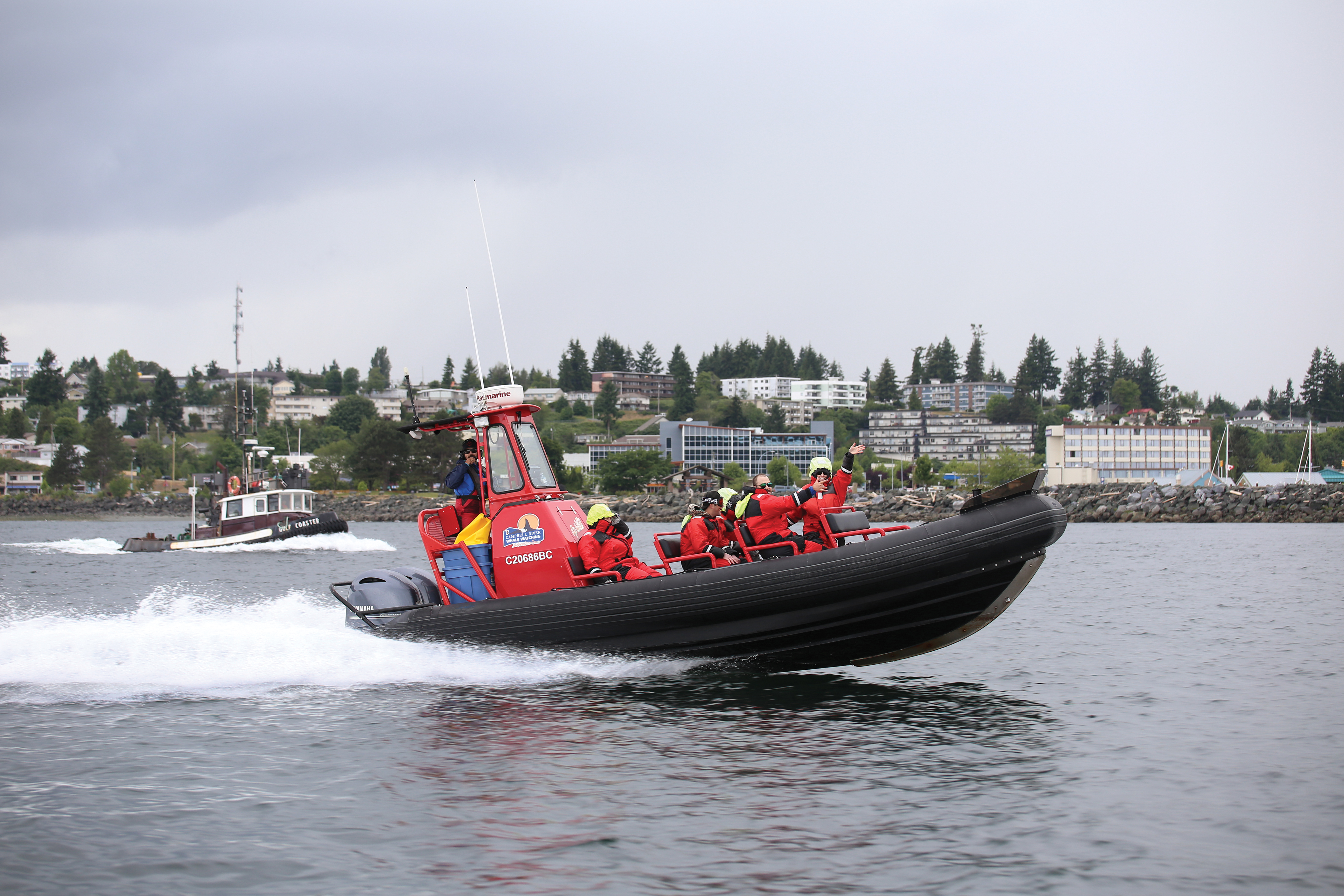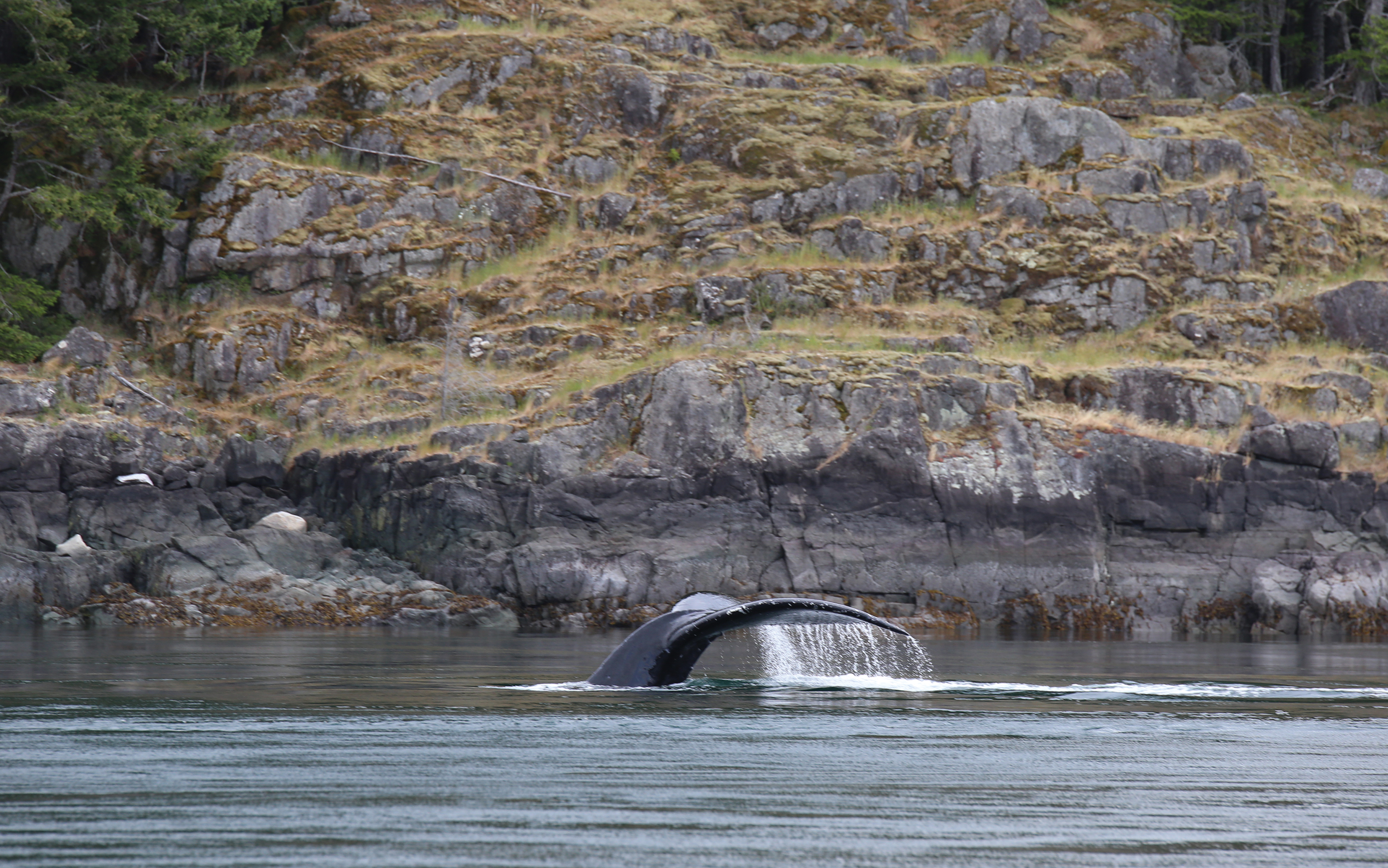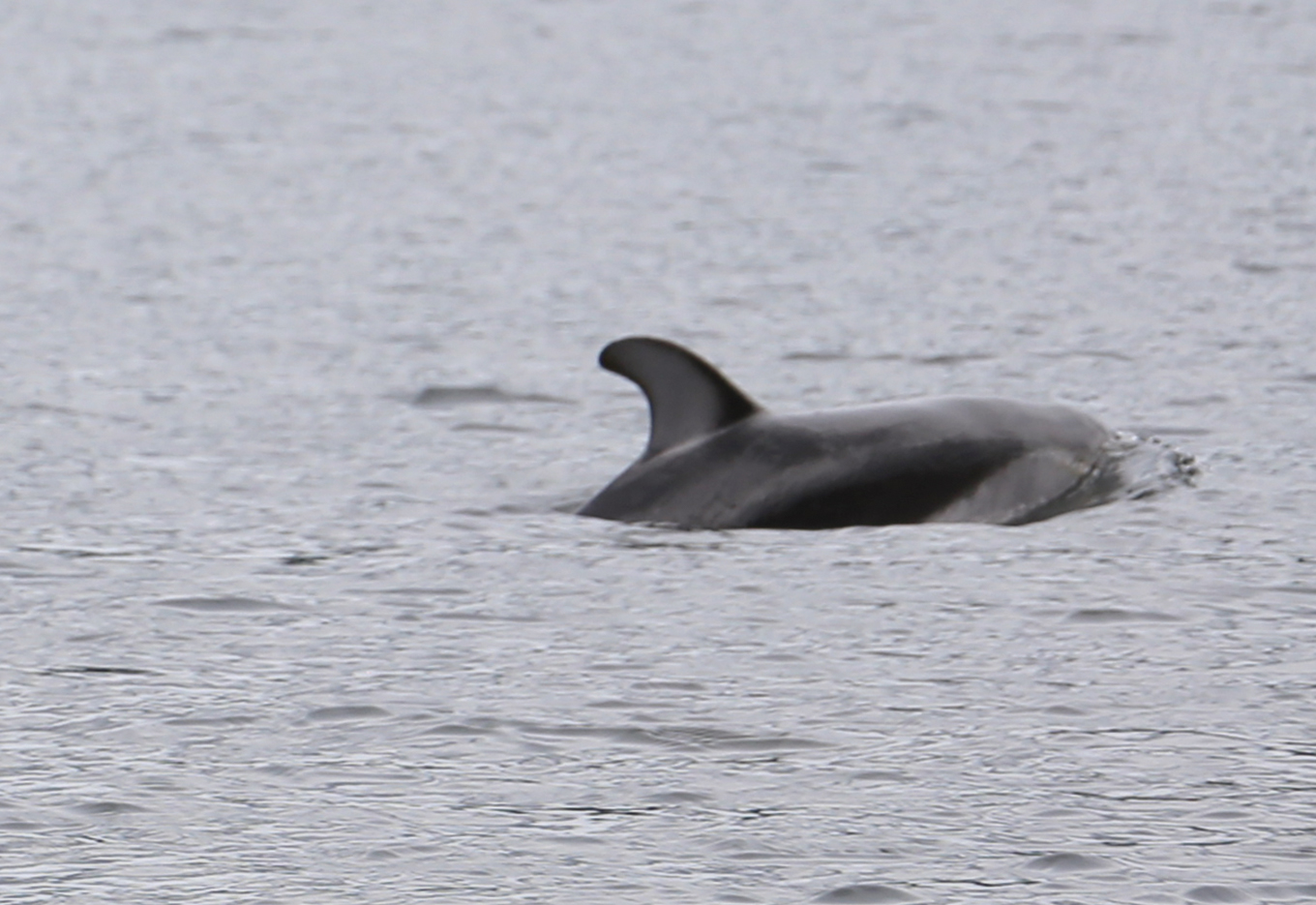 The chilly wind, the numb hands, the headache from the bumpy ride, it was all worth it when a dolphin surfaced right beside the boat to take a breath. I could have touched its dorsal fin. I didn’t of course.
The chilly wind, the numb hands, the headache from the bumpy ride, it was all worth it when a dolphin surfaced right beside the boat to take a breath. I could have touched its dorsal fin. I didn’t of course.
The number one rule is that boats are supposed to stay 100 metres away from any marine wildlife (aka: no touching!), but we were just floating along, the dolphins decided to come right up to us.
To be clear, motoring over 110 miles per hour in a Zodiac was lots of fun and all of the unpleasantness could have been avoided. Jack Springer, our guide from Campbell River Whale watching, had gloves and toques that I declined as well as empty spots further to the back of the boat that were much less bumpy, but I wanted to sit in the front to see better. A little bit of discomfort makes me more adventurous right?
Early the previous evening, orcas had been spotted south of Cortes Island so we headed north up Discovery Passage, thinking that’s the direction they might have been headed. We saw a seal before we even left the marina. Springer said they often swim in to look for salmon.
Our historical, geographical, marine wildlife safari started out with a visit to George and Georgina, the bald eagles living on a little island just off of Quadra Island. Springer had a herring for each of them, whistling before tossing it into the ocean just to the side of the boat so that everyone on board could get a spectacular photo of them swooping to grab their treat. Springer said they think that it is the same couple that come back to that island every year, but they aren’t 100 per cent sure.
We soon came upon some guillemot diving into the ocean and flying up to their nests on the face of a cliff. It’s hard to believe but Springer said they can dive down 200 feet. Their eggs are also bottom heavy so they don’t roll off the cliff.
The first hint of something a little more exciting was the spray of a humpback whale coming up to breathe. The keen eyes of one of my fellow whale watchers spotted it and we made our way over.
Humpbacks will surface and take three or four breaths before diving again. A tail flip means a deep dive and the 40 foot long animal might be under the surface for as long as eight minutes.
Springer said they jokingly equate watching humpback whales to watching paint dry.
Once spotted, Springer texted the other local whale watching companies to let them know where the humpback was. Most of the larger whale watching companies belong to the North Island Marine Mammal Stewardship Association (NIMMSA) which requires them to follow a code of conduct while engaged in marine operations.
Springer said that if whale watching companies aren’t members it is probably because they don’t always follow the code of conduct.
As we continued along, it was difficult to focus on looking for wildlife because the views were so spectacular.
Springer took us along the Island coast in search of bears before pulling over and helping us off to have lunch at Cordero Lodge.
The boat-in lodge was a chance to warm up and visit with fellow whale watchers.
 There was some charming wildlife to be seen while we were off boat. Cordero is populated with hundreds of humming birds whirring about. The shallows also offer an opportunity to check out sea anemone, starfish and sea urchin. Springer doesn’t always bring his tours to Cordero, but it was raining at one of his other main stops.
There was some charming wildlife to be seen while we were off boat. Cordero is populated with hundreds of humming birds whirring about. The shallows also offer an opportunity to check out sea anemone, starfish and sea urchin. Springer doesn’t always bring his tours to Cordero, but it was raining at one of his other main stops.
We hopped back in the boat to continue our safari and quickly found some dolphins. Usually mischievous and playful, Springer figures the dolphins were sleeping. But for us newbies who hadn’t seen a dolphin in the wild, it was magical all the same. Just as we pulled away, another tour boat joined us, responding to Springer’s alert via text.
As we headed back to Campbell River, we stopped only once to see some smelly sea lions, on that day, the orcas were nowhere to be found, by any of the tour boats that had headed in all different directions. For a slow day on the ocean, there sure was a lot of activity.